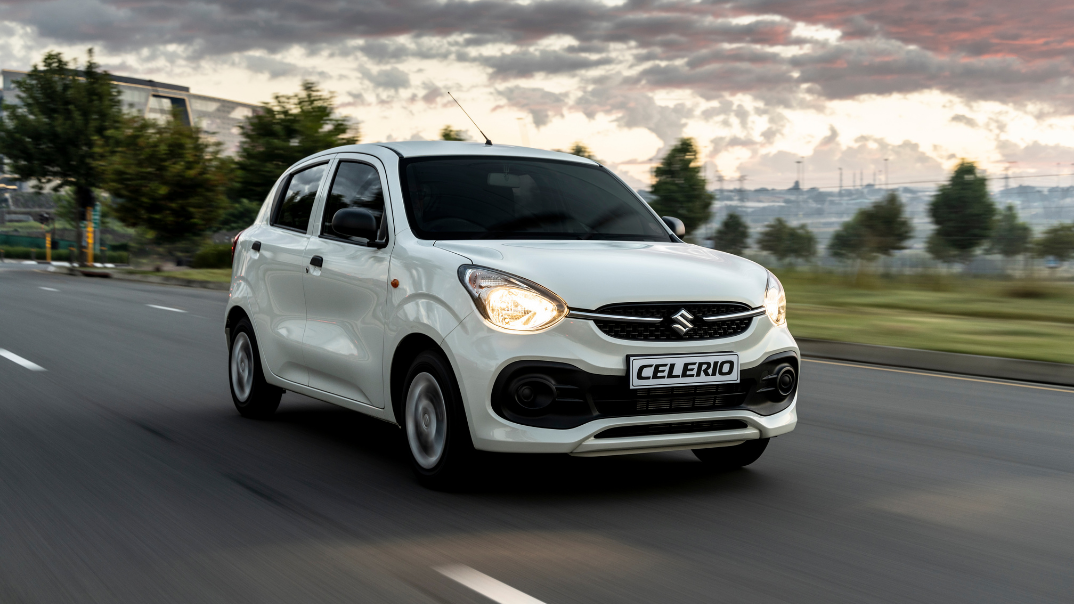 Ever wondered if car manufacturers’ fuel consumption figures are accurate? In this episode of How Things Work, we’re going to take you through how manufacturers measure their claimed fuel consumption figures.
Ever wondered if car manufacturers’ fuel consumption figures are accurate? In this episode of How Things Work, we’re going to take you through how manufacturers measure their claimed fuel consumption figures.
If you can’t watch the video, you can read the video transcription below: Edited for clarity and readability
Pieter : (00:00)
Welcome to this week's episode of How Things Work. And in today's segment, we're going to be talking to you about fuel consumption and the rather controversial issue of how the manufacturers actually measure their claimed fuel consumption figures. So as the name suggests, fuel consumption measures how much fuel our vehicles consume and can be expressed as either litres per hundred kilometres or, as some people prefer, kilometres per litre. Now most modern vehicles work out our fuel consumption for us, and we can see the results displayed on our trip meters. However, to work it out is a relatively simple process. So simply reset one of your trip meters to zero when next filling up with fuel and then fill up your car to its maximum level. To get the most accurate measurement, drive your car until it's almost empty before refuelling. Now fill up the tank again to the same level as before and take note of how many litres it took to fill up.
Pieter : (01:05)
And if you forget, don't worry, it'll still be on your receipt. And now you'll have exactly how many litres you needed to fill up the tank, as well as the exact distance you travelled using those litres of fuel. It is simply a question of dividing the amount of fuel you used in litres, into the distance in kilometres you travelled and voila, you have a fuel consumption figure of kilometres travelled per litres consumed. Now, if like me, you prefer to measure the fuel consumption in the form of litres per hundred kilometres, all you need to do is divide the number that you got into a hundred and this converts kilometres per litre into litres per hundred kilometres.
Now you may have noticed that all manufacturers quote their fuel consumption figures. And in fact, it's a legal requirement for all new vehicles to have this information displayed when they're on the showroom floor. The debate has raged about how accurate these claims are and whether they actually translate into real-world conditions. And the jury is certainly out on this. Although there are some vehicles that we've tested, which gave us fuel consumption figures very close to the claimed figures.
So how do the manufacturers develop their fuel consumption figures? Well, firstly, as with most things in engineering, there are various conventions applied depending on what part of the world you're from. And there are three main testing procedures. There's a whole lot, but the main three are the European Union's New European Drive Cycle, or NEDC, which measures an urban and an extra urban cycle. Other drive cycles included are the EPA Federal Test in the United States and the JC Zero Eights in Japan. We'll have a look at the European test as most of our vehicles sold in South Africa use this convention, but we'll also explain some of the differences in the testing procedures across the globe, which will then explain to you or illustrate to you why we see such differences in terms of the claims that manufacturers make on their fuel consumption figures between different territories.
Pieter : (03:13)
So the urban economy simulates a 4,052 metre urban trip. It's an average speed of 18.7 kilometres per hour and at a maximum speed of 50 kilometres an hour. So quite precise and I think there's a clue here that you'll see that these tests are very, very standardised. And there's a point behind that. The extra urban driving cycle lasts 400 seconds, or six minutes and 40 seconds at an average speed of 62.6 kilometres an hour, believe it or not, and a top speed of 120 kilometres an hour. The main reason why these tests do not translate into real world figures, I believe, is because amazingly the manufacturers are allowed to do the following. So they are able to disconnect the alternator, use special lubricants that are not typically used in production cars, in order to reduce friction during the test, and turn off all electrical gadgets, such as the air conditioner and radio.They're even able to adjust brakes or even disconnect them to reduce friction.
Pieter : (04:17)
They also tape up cracks between the body panels and windows to reduce air resistance and we can see this, by the way, on Formula 1 cars, and they're able to even remove the wing mirrors. It's hardly how we'll drive our cars. And while this may seem absurd, the reality is that Europeans are far more concerned about CO2 emissions, than fuel consumption itself and their tests are therefore more focused on emissions and the subsequent taxes that are applied to those emissions. Tests in the US and Japan are a little bit more accurate, however. The Japanese test is similar to the European test, but the cars are driven for longer and at higher speeds, which I think are a little bit closer to how our vehicles are actually driven. And the US tests also simulate so-called urban and highway conditions like their European counterparts. But in the urban tests in the US, a cold engine is used, which is required to make 23 stops over a period of 31 minutes with an average speed of 32 kilometres an hour and a top speed of 90 kilometres an hour.
Pieter : (05:23)
The highway tests use a warmed up engine and make no stops, averaging 77 kilometres an hour with a top speed of 97 kilometres per hour, over a 16 kilometre distance. So you can see that the test in the US is a little bit more comprehensive than the one performed in Europe. The measurements are then adjusted downwards by a factor of 10% for city driving and 22% for highway, to more accurately reflect real world results. And then a weighted average of city at 55% and highway at 45% fuel economies are used to determine a combined rating. Finally, additional tests are conducted, which measure the influence of higher driving speeds, harder acceleration, colder temperatures, and air conditioning use. So with all the differences in testing procedures, which give us a varied result for the same car, it's no wonder we are sceptical about how accurate the figures are, but they do serve a purpose when we're comparing one car with another.
Pieter : (06:31)
And it's fair to say that if the same test procedures are used, it is an accurate measurement in determining whether one car has better fuel consumption performance versus another. And despite all the efforts being applied to tests to get them to be more representative of real world driving conditions, it becomes very, very difficult to factor in our driving habits, the terrain that we are operating in, so hilly versus flat conditions, our temperatures, atmospheric pressures, altitude, and even the quality and grade of fuel we are using. So the next time your fuel consumption figures don't compare to the claim figures, don't stress too much. There are no conspiracy theories to provide misleading data, but rather inconsistency in the testing procedures and their actual use, which is mainly for licensing and tax purposes. And if you really are still concerned that your car is using too much fuel, there are a few online resources where thousands of drivers have uploaded their figures for comparison. And one such website is called Honest John.
So we hope that you found that information on how the manufacturers develop their fuel consumption figures. And we look forward to seeing you on future episodes of How Things Work.


![[Update] Which engine oil is best for your car? Your manufacturer knows best!](https://blog.suzukiauto.co.za/hubfs/Suzuki%20engine%20oil%20is%20best%20for%20your%20car.png)